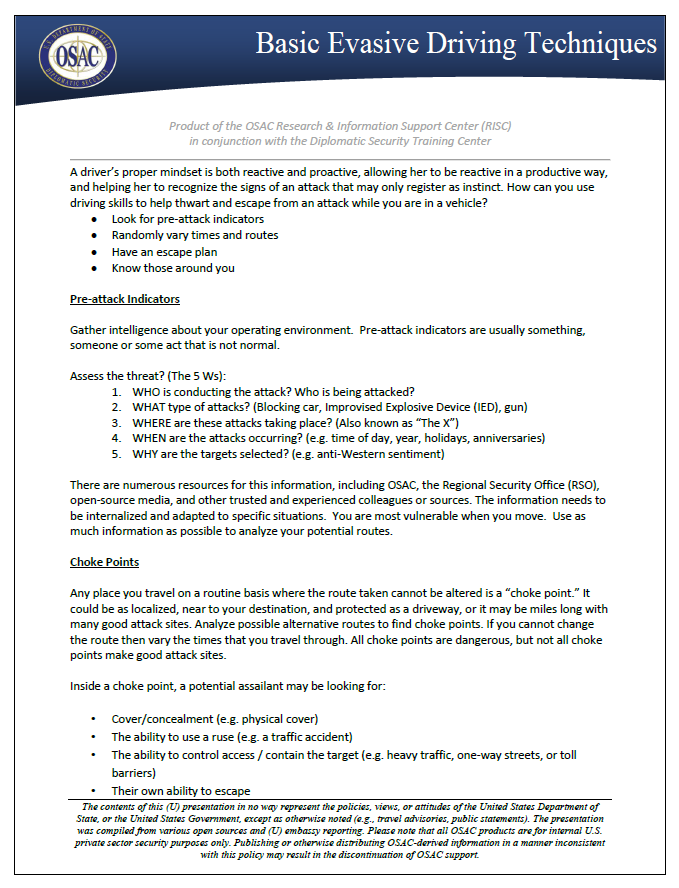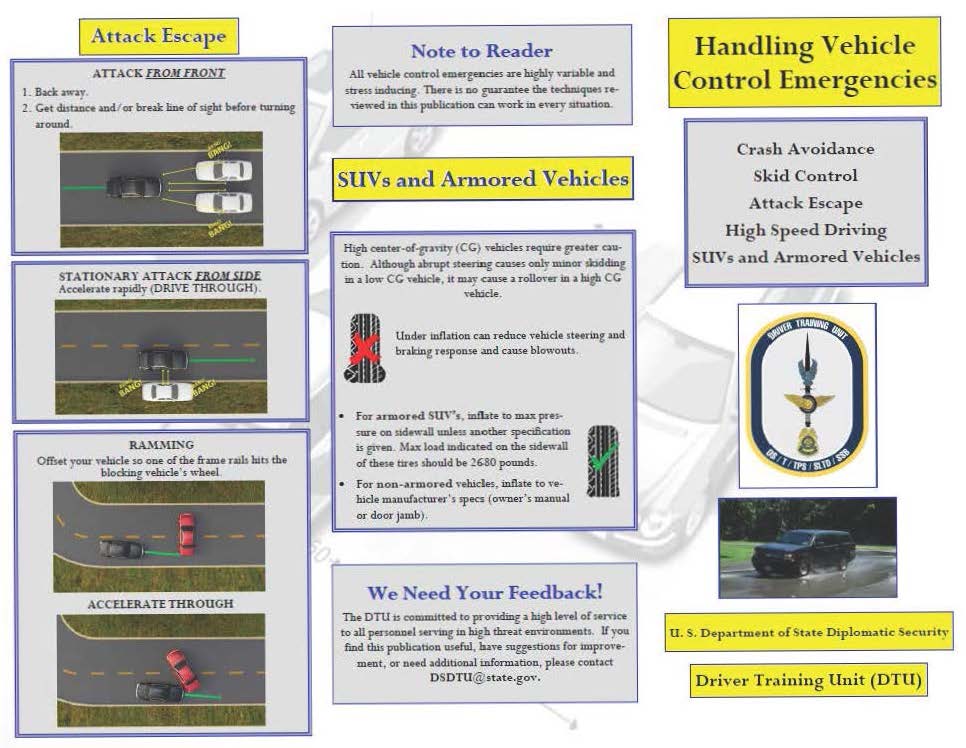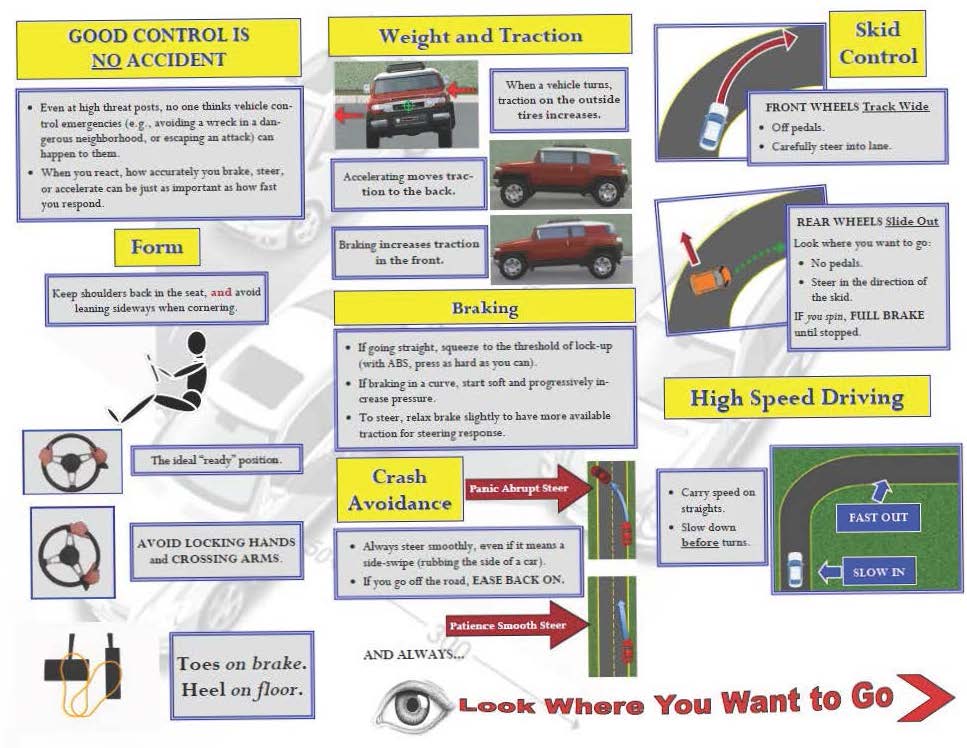A driver’s proper mindset is both reactive and proactive, allowing her to be reactive in a productive way, and helping her to recognize the signs of an attack that may only register as instinct. How can you use driving skills to help thwart and escape from an attack while you are in a vehicle?
- Look for pre-attack indicators
- Randomly vary times and routes
- Have an escape plan
- Know those around you
Pre-attack Indicators
Gather intelligence about your operating environment. Pre-attack indicators are usually something, someone or some act that is not normal.
Assess the threat? (The 5 Ws):
1. WHO is conducting the attack? Who is being attacked?
2. WHAT type of attacks? (Blocking car, Improvised Explosive Device (IED), gun)
3. WHERE are these attacks taking place? (Also known as “The X”)
4. WHEN are the attacks occurring? (e.g. time of day, year, holidays, anniversaries)
5. WHY are the targets selected? (e.g. anti-Western sentiment)
There are numerous resources for this information, including OSAC, the Regional Security Office (RSO), open-source media, and other trusted and experienced colleagues or sources. The information needs to be internalized and adapted to specific situations. You are most vulnerable when you move. Use as much information as possible to analyze your potential routes.
Choke Points
Any place you travel on a routine basis where the route taken cannot be altered is a “choke point.” It could be as localized, near to your destination, and protected as a driveway, or it may be miles long with many good attack sites. Analyze possible alternative routes to find choke points. If you cannot change the route then vary the times that you travel through. All choke points are dangerous, but not all choke points make good attack sites.
Inside a choke point, a potential assailant may be looking for:
- Cover/concealment (e.g. physical cover)
- The ability to use a ruse (e.g. a traffic accident)
- The ability to control access / contain the target (e.g. heavy traffic, one-way streets, or toll barriers)
- Their own ability to escape
Escape Plans
Plan a predetermined reaction. People are predisposed to respond in certain ways. By elevating your awareness and preparing to recognize the warning signs of danger, you will have a better chance to respond quickly and appropriately.
- Be familiar with choke points prior to an attack
- Visualize exits; know the closest safe place
- Drive through (forward) or reverse out (backward)
- Know the available drivable terrain; you may have to drive through a fence or over a curb
- If necessary, use your vehicle to ram vehicles out of the way
Surveillance Detection
Look for people watching you, watch for vehicles following you, especially in or near a choke point.
- One sighting of a potentially suspicious vehicle – Maybe nothing
- Two sightings – Suspicious behavior
- Three sightings, even separated by time or distance – Assume Surveillance
- Target identification is the signal that often starts the attack. The target ID will be located in or near the attack site. It may be the last chance you have to recognize danger before the actual attack starts.
…



